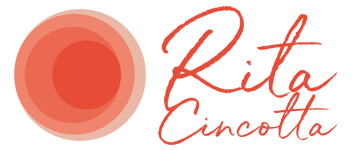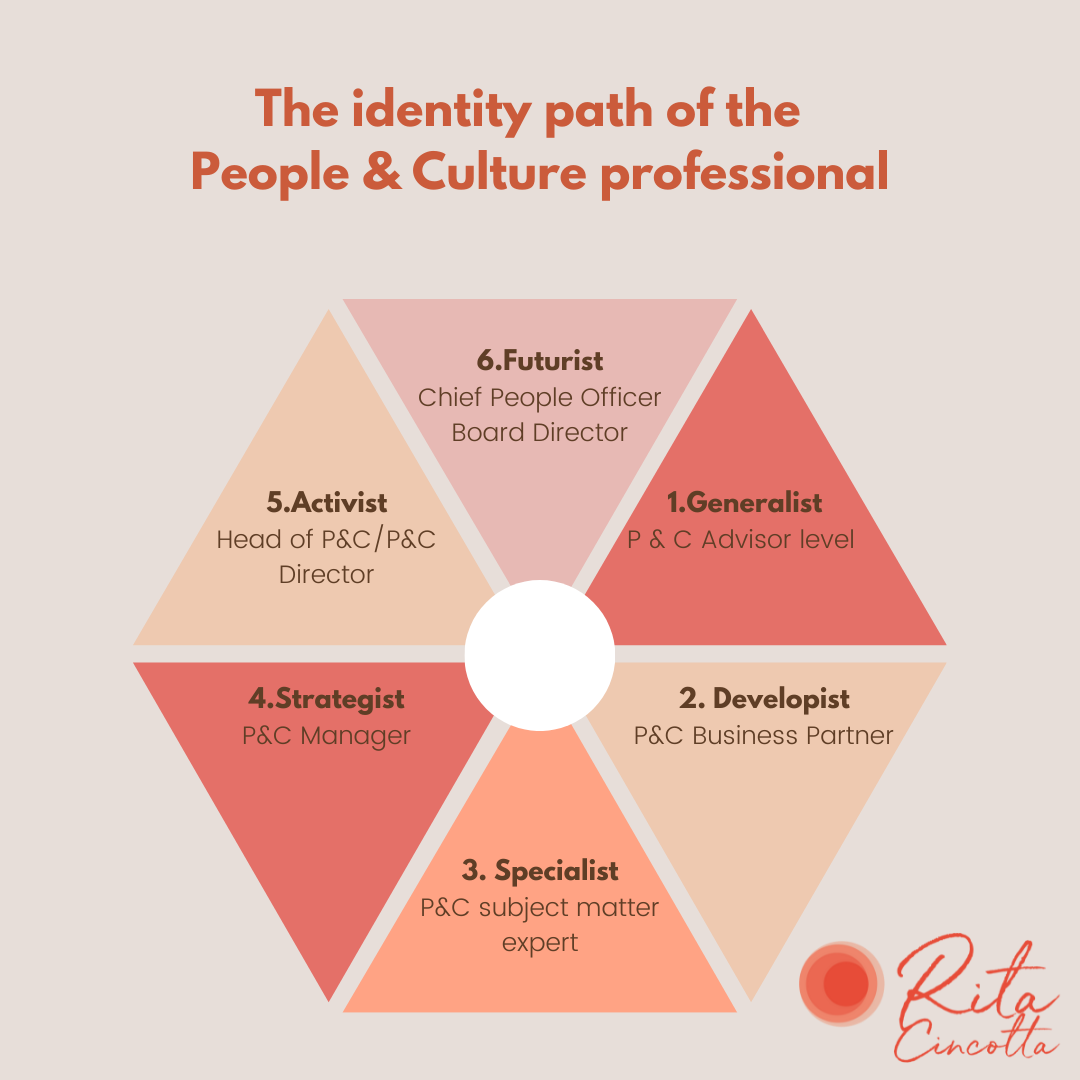For People & Culture professionals, it can be confusing to know how much time to spend focused thinking “in” our organisations and how much time to spend thinking “out.” If we are too focused “in” our organisations, we can miss new things that are happening outside that we may need to be aware of. If we are only focused outside of our organisations, we may miss what’s happening right in front of us.
From my experience, different roles in People & Culture need to have a different view, sometimes more inwardly focused and sometimes more externally focused.

(from the People & Culture Leadership Lane Program)
At the beginning of our careers, we focus on building commercial or business acumen. We are learning our industry or profession. Our focus is mainly in the organisation and we adopt the identity of a generalist. This means a broad application of what we are learning and delivering to internal clients.
At the next level, the P&C Business Partner, our focus is on building relationships. We still have mainly an internal view, and the identity is associated with what we develop. We are responsive to stakeholders, and in partnering, we are developing solutions that are appropriate for their goals.
As we go to the Specialist level, our focus is on expertise. We are the subject matter expert in an area of our professional discipline. Our view starts to shift towards the external view; however, it is still mainly internal. As a specialist, we have a deeper level of expertise in an area of our professional discipline. We could stay at this level for a while and continue building a career here, particularly if we manage projects and initiatives.
At the manager level, our focus is breadth. We have several areas of accountability, as well as perhaps managing a team. We are looking at what’s happening outside of our organisation to inform what we do in our organisation, more than at other levels. Our identity is that of a strategist. We are developing strategies that support the business strategy.
At the Head of People & Culture level, our focus is credibility. We are building credibility at the more senior levels of our organisation. Our focus moves to an even split between the organisation and what is happening outside, in other organisations, in our industry and in the market. We take on the identity of the activist. Making things happen for ourselves, our team, and the organisation.
Finally, we reach the c-suite level. Here the focus is vision. We are interacting with the Executive Team, the Board, and external stakeholders. The view is largely outside the organisation, particularly as you take on the identity of the futurist. You are preparing your organisation for the next few years, whilst leading the function now.
The progression through these levels will not always be linear. In fact, sometimes the best career moves are the ones that you don’t plan, taking you sideways, up, down, and diagonally across like a fun game of snakes and ladders. With each move, you are progressing through the leadership lanes, at your pace, and in service of you.
Once we know where our focus needs to be, it’s a lot easier to know the proportions of time best spent on the level and the internal and external views. We also consider our identity at each level to help us navigate the type of thinking and activity we can engage in at each level of our career.
If you would like to know more about how you can seamlessly move through these levels, here is some more information on The People and Culture Leadership Lane program.
Rita Cincotta coaches, facilitates and speaks on individual and team performance, leadership development, resilience and new ways of working. She works with organisations to develop human centred solutions that help people and businesses to thrive.

